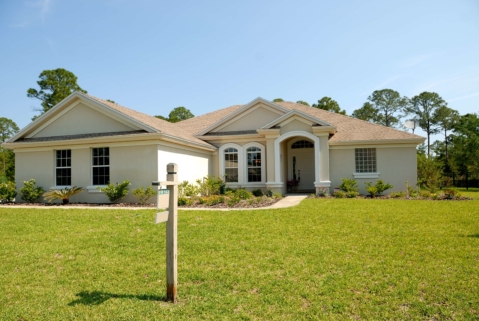What Is a 1031 Exchange?
Think back to eating lunch in the school cafeteria as a kid. Remember some of the trades that used to go on? You could trade a ham sandwich for pita and hummus or have essentially your pick of the litter if you were willing to part with some Oreos.
While a bit more technical and dealing with much higher prices than a chocolate pudding cup, 1031 exchanges are not all that different from swapping food at the lunch table. Find out how this is an incredible tool for real estate investors to take advantage of, how a 1031 exchange works, and how you can get started.
How does a 1031 exchange work?

When you buy an investment property, you have to pay capital gains taxes on it when you eventually sell it. This can easily cost thousands of dollars.
With a 1031 exchange, you can defer these taxes as long as you purchase a similar property, using the profits from the first property’s sale. Back to the lunch table analogy, it’d be like trading Cheetos for BBQ Lays, then trading the BBQ Lays for something else instead of eating them.
To lay it out a bit further, here’s the typical process:
- Sell an investment property.
- Take the profits and purchase a “like-kind property” (more on that in a minute).
- Save on having to pay taxes in the process.
Are investors trading properties with someone else?
In a traditional sense, yes. Since this code came about in the 1920s, people could (and still can) swap their investment property for someone else’s. Nowadays, it’s pretty unusual for this to happen.
Many 1031 exchanges happen through a three-party system. In other words, a third party or middleman holds onto your profits from selling, then uses that money to get your next property.
What other benefits exist for a 1031 exchange?
Other than tax benefits, here are some other huge advantages to a 1031 exchange:
You could switch to owning rentals.
Imagine selling land for a duplex and suddenly being able to rent that property out. You’ll start generating income that you might not have otherwise made from owning raw land.
You can change properties.

Going off of that first benefit, you don’t have to stick with just one type of property. If you own a rental home in Iowa but want to switch to owning a commercial property, by all means! Sell that rental home and use the profit to pay for a commercial building.
You don’t have to stay in the same state.
Investments can happen all over the country with a 1031 exchange. Say you sell that Iowan rental and see a great opportunity for real estate investing in Wisconsin, go right ahead. Maybe you went to school in Virginia and would love to have a connection back to that state but you’re living in California — VA rental properties are still fair game.
You don’t have to give up property investing.
Stuck with a nightmarish, time-consuming rental property that you want to get rid of, but you don’t want to completely get out of the game? A 1031 exchange is perfect for you. You can sell your tough rental situation and transfer those earnings over to a different investment property that requires less attention.
Where do I start?
Before you can start trading at the lunch table, you need food. RealtyHive has all the goodies you can imagine. While we’re based in Wisconsin (and have plenty of Wisconsin investment properties to boot), we list land, residential, commercial, and international properties as well.
Find your investment opportunity through RealtyHive and start dreaming of tax deferment and 1031 exchange benefits today (we know, that’s what most people dream about anyways).
- What House to Buy, Based On Your Zodiac Sign - August 28, 2020
- 6 Misunderstood Things About Buying & Selling Houses - August 23, 2020
- 5 Things to Know About 401K Real Estate Investing - August 17, 2020




Trackbacks & Pingbacks
[…] covered 1031 exchanges in detail in a previous blog, but it’s good to refresh. You can defer capital gains taxes in a […]
Leave a Reply
Want to join the discussion?Feel free to contribute!